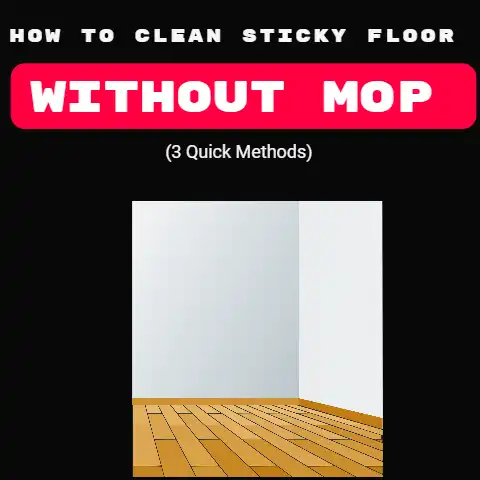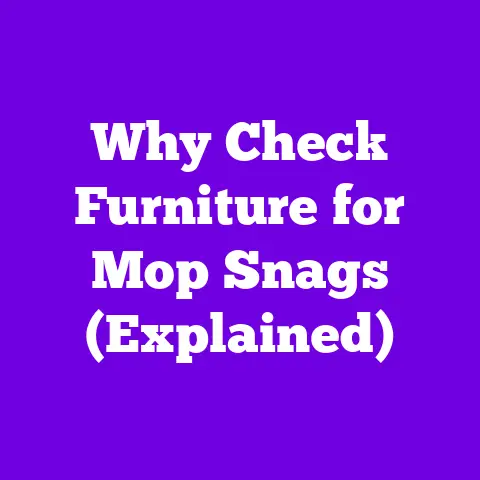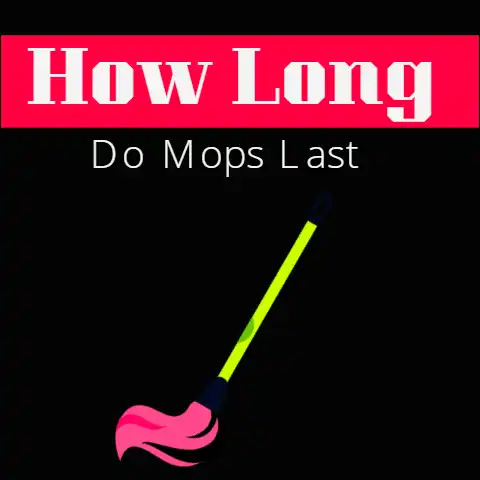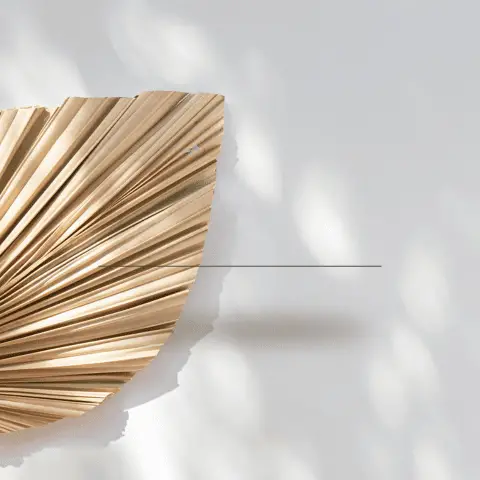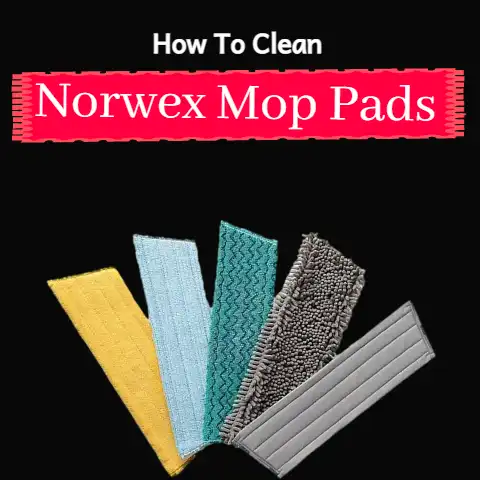How To Clean Mop Head Without Bleach (4 Methods Explained)
To clean a mop head without bleach, you have several options: use a vinegar solution by soaking the mop in a mixture of hot water and white vinegar, wash it with dish soap and hot water, use a hydrogen peroxide solution, place it in the dishwasher with white vinegar, or hand wash it in warm water with dish soap. Make sure the mop is fully dry before storing it to prevent mold growth.
Discover alternative cleaning methods and unlock the secrets to maintaining a clean, germ-free mop head, free from the reliance on bleach.
We’re excited to share our insights and expertise with you, ensuring that your cleaning experience becomes not only effective but also environmentally friendly and safe for your home and loved ones.
Although bleach is a popular cleaning agent, however, using bleach might not always be the ideal solution, especially for those seeking more eco-friendly alternatives or individuals with sensitivities to strong chemicals.
In this blog post, we aim to address your concerns and offer you a range of effective techniques to clean your mop head without the use of bleach.
Whether you are a meticulous homeowner, a busy parent, or someone seeking more eco-friendly cleaning solutions, this guide is designed to cater to your needs.
We will cover step-by-step instructions, and essential tips, and offer suggestions for natural cleaning agents that will effectively cleanse and deodorize your mop head, without compromising its functionality or longevity.
We understand the frustration of dealing with a dirty and odorous mop head, and we assure you that the techniques we present are tried and tested.
We have curated the best practices from cleaning experts and enthusiasts alike, providing you with a comprehensive resource that will simplify your cleaning routine and leave your mop head looking and smelling fresh.
Get ready to revolutionize your cleaning routine while keeping your home sparkling clean and chemical-free.
Need a Fast Solution?
If you’re seeking a quick and effective solution for cleaning your mop head without resorting to bleach, I highly recommend considering alternative products or services.
One fantastic option is an eco-friendly cleaning solution specifically designed for mop heads. These products are powerful yet gentle, allowing you to remove dirt, grime, and odors effectively.
Additionally, investing in a high-quality microfiber mop head can make a significant difference. These innovative mop heads trap dirt and bacteria, making them easier to clean without the need for harsh chemicals.
By exploring these alternatives, you can achieve a pristine and sanitized mop head without compromising your commitment to eco-friendly practices.
Why is cleaning a mop so important?
A mops objective is clear. It helps remove floor dirt as a cleaning process. The mob fabrics capture bacteria and mold growth.
Thus, there is a need to clean the mop frequently as dirt traces trap in the fibers.
Preventing dirty floors dirt from getting on the mop is crucial and so cleaning after each use is highly important.
In this way, scrubbing helps to avoid dirt more than cleaning, giving off unpleasant odors.
Drawing from my experience, it is crucial to properly clean the mop bucket after each use. Use mild detergent or gentle detergent.
The need is to let the mop dry completely. It may be difficult in wet or cold climates, but is best to do it.
In damp conditions, mildew and bacteria proliferate. Even on cleaning a damp mop, it develops signs of wear and smell, and overtime becomes dirty.
Why clean the mop head without bleach?
Mop heads are the perfect tools for cleaning floors. Yet people walking constantly through your home bring nasty stuff of all sorts.
With cleaning directions on hard floors, vacuuming, or mopping is an effective cleaning method.
However, many people search for ways to clean mop heads or steam mops without using harsh chemicals or bleach, and you are not alone in this search.
Efficacy is a typical mopping concern. Filthy wet mop heads transport more grime than floor cleaning.
However, you may remove bacteria and filth from the floor using proper cleaning methods to clean the mop head.
Cleaning a mop head without bleach is an effective cleaning solution.
There are a few tricks and tips to get the mop head clean. Here are a few tips on cleaning mop head without bleach:
Types of Mop heads
There are different mop head types to clean floors.
Sponge mop
The common mop head type is a sponge mop. It is simple to use and does not require specific cleaning solutions.
However, sponge mops hold onto bacteria and dirt as absorbent materials. The sponge mops require less maintenance and are relatively easy.
The downside is it leaves streaks behind. It is crucial to follow the instructions of the manufacturer.
String mop
A string mop head is made using a string piece or a rope attached to a handle.
It is covered usually with a mesh or a layer of fabric.
The string material has a layer of mesh or fabric. String mop heads are not common, but are effective for floor cleaning.
Microfiber mop
Microfiber mops form a fabric by weaving synthetic fibers. These fibers are finer giving the mop a higher surface area.
Microfiber mops pick up dust, dirt, and hair. The fabric is absorbent and helps prevent smears and streaks.
The microfiber mops are durable and last longer.
The fabric is safe for all types of flooring, including tile, linoleum, and hardwood.
4 ways to Clean the mop head
There are a few different ways to clean the mop head. After conducting experiments with it, the common methods are:
#1
Use Hot Water
Sanitize well your mop with rage mops or cotton and a bowl of water. Bring gallons of cool water and after the water boils, soak the mop.
Avoid mop from wrinkling by leaving the mop in water until cool.
When the mop is cool enough to touch, hang it to dry after wringing it out.
Most germs are unable to survive high temperatures for a long time, thus soaking in water the mop destroys the germs, removing excess dirt.
You may add the bucket of water to some preferred soap or vinegar solution.
It will not kill on your mop all the bacteria but will kill those that can’t withstand the heat.
#2
Use Washing Machine
Mop heads are typically detachable from the handle. If you are using a washing machine, it is best when the mop head is filthy.
Bear in mind that it does not work well on sponge mops.
Clean your mop by throwing it with detergent when it is machine washable.
There is no need to stuff anything during the normal cycle, just incorporate cleaning supplies, and laundry detergent, such as extra mop heads or rags.
Run in the washing machine on a regular cycle. Remove the mop and squeeze in extra water. Drying in the washing machine is not the recommendation.
Thus, when the mop rinsing is complete, wring out and dry it as any other garment.
Reaching hard-to-reach places for mops and getting rid of grime and stubborn dirt is a way of managing space effectively.
#3
Use Hands
There is one way of cleaning floors when you do not have a replaceable mop head machine, and you do not want to use vinegar or bleach.
Using hands is the right technique for the mop, since its creation. Using a detachable head is also a good option
The rinsing and soaking procedure is to get wet and muddy. Put the mop in a hot water solution with detergent.
The recommendation is two gallons of water and one cup of detergent.
Keep the solution away from animals and curious children.
Allow the mop soaking time, good rinsing, and drying.
#4
Use Dishwasher
A microfiber mop head is easy to clean without extra manual labor. The microfiber mop heads are good in a dishwasher drying process.
Throw them with dishes load, adding little dish soap. Your mop will come out fresh and clean.
This is an easy method to clean mop and it stays cleaner with detergent and hot water for a longer time.
Small and fast tips
- Put appropriate caution signs indicating wet floor.
- In the cleaning solution, always wet the mop head before mopping. to avoid foul smells.
- Follow a S or 8 pattern while applying cleaning solution as a rule of thumb
- Rinse the mop after each use to have mops clean
- Put the mop head to dry on a clothesline in direct sunlight. It will keep bacteria and mildew at bay.
Conclusion
As per my expertise, I know washing the mop and rinsing with clean water in the hottest setting is the best.
To avoid bleach in cleaning the mop head, you may include vinegar.
It will ensure a bacteria-free breeding ground, and a clean mop as vinegar is a wonderful disinfectant.
Knowing to use a mop and cleaning a mop head without bleach is the best.

